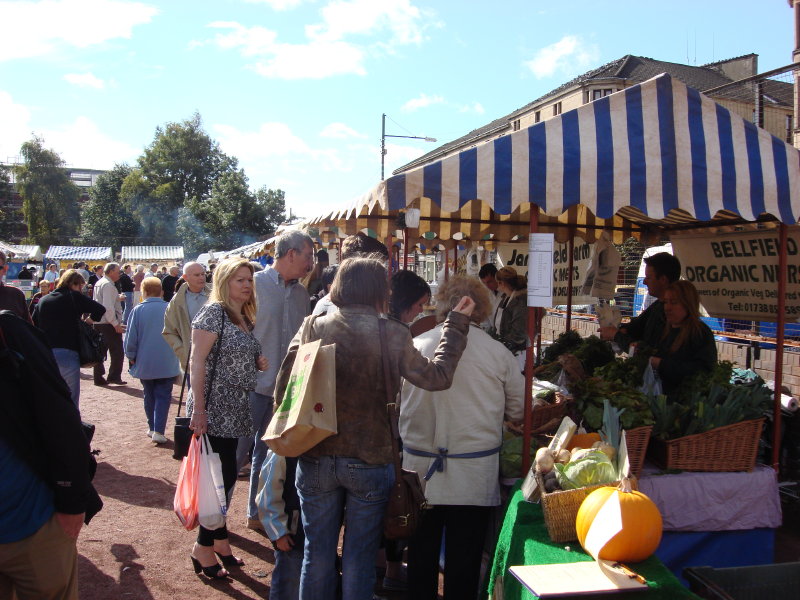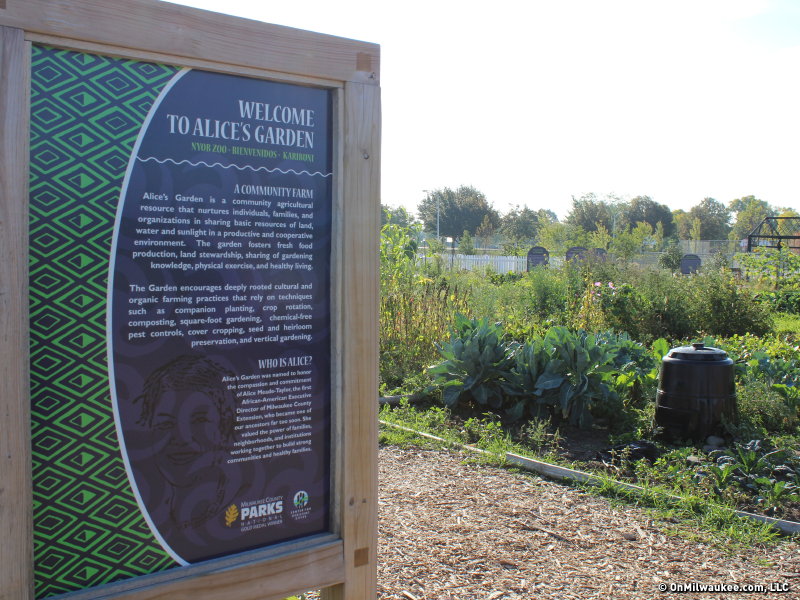You’d be hard pressed these days to pick up an issue of your favorite food magazine and not find a couple of articles about how this restaurant or that chef is sourcing locally – providing seasonal ingredients and sustainable meat and fish.
This movement has become less of a novelty and more the exemplar of "new" American cuisine. As chefs and restaurants angle to solicit their targeted markets, the industry edict of sustainability has brought with it a pomp and pizzazz that has effectively gilded many restaurant concepts. As a marketing tool, however, it has begun to seem superfluous because, in many places, it has simply become the customer’s expectation.
This is a good thing.
The popularity of books and movies that have unearthed the truth behind the food we eat has given the movement a full head of steam. Chefs (myself among them) are moving away from primary vendor relationships to other "mom and pop" distributors that enthusiastically specialize in just a few things and disclose all available information about the food they grow or raise.
Purveyors that have gone out of their way to seek out – and make available – things that are locally produced, even if they are not products that they regularly house, have gotten a leg-up on some of the other broad-line vendors in our area that continue to stand pat with processed non-food.
Websites are being created for chefs that consolidate local crops into easily navigated order guides from which to procure ingredients for their menus and to have delivered to their door step. Dave Swanson’s Braise RSA, for example, has made it simple to get locally grown product to your kitchen without having to go search for it.
The future of local food will see chefs and restaurants growing their own vegetables to get even closer to the source. At the Watertown Regional Medical Center, were I serve as executive chef, we have just finished planting a 10,000-square foot garden behind our hospital from which we will source just about everything that grows in the Midwest.
We like to think that we are on the cutting edge, but I suspect that large-scale chef gardens will become more and more prevalent as the demand and reverence for seasonal eating grows.
If you’re asking yourself, "When did all this happen?" don’t feel embarrassed. I did, too.
I can remember working at a seafood restaurant as a sous chef about eight years ago. Nothing was local and no one really cared or asked – least of all me. In fact, I can recall being tasked to create specials on our slower nights. I’d conceive a dish that was named for some other place in the world in view of our customer’s yen for the exotic. I once created an entree with scallops that were stuffed with crab. I called them "Baltimore" scallops.
Whether or not the crab was actually from Baltimore was beside the point. After one busy holiday weekend in particular, I had a bunch of shellfish and some leftover cod. I decided to make a bouillabaisse that I dubbed "Barrier Island" stew. Could the mussels have been fished from the Barrier Reef? Absolutely. Were they? I have no idea.
Dubious? Truth be told, it happens every day in places you wouldn’t even believe. And while I forged these suspicious concoctions under the tutelage of a chef that was delighted with my ability to take crap and sell it as four-star "catch of the day," I gave up this practice long ago. Moreover, chefs can’t really get away with this anymore because customers know more about food than they ever have.
When we created a dish that was tropical, foreign or locally impossible, it would sell. There was nothing particularly novel about writing "Door County cherries" on a menu back then. That has changed tremendously. Customers’ awareness of homegrown options and their – often times – superior quality has all of us in the business zealously competing to have the most local-centric menus in town.
But, as the definition of local becomes increasingly finite, I find myself wondering, "What’s next? Where will this movement take us?" Will we one day have soil-bedded dining room tables with carrots, beets and swiss chard growing betwixt a party of two for them to pull and hack off themselves? Will there be pigs and chickens rambling about the dining room?
Like anything, it can be overdone, and likely will be at some point. In order to retain the honesty of it, it may be good to hold a mirror up the local movement and perhaps knock it down a peg or two.
What is locality and sustainability all about? It might help to first understand that not everyone thinks it’s so great. Is that surprising? It shouldn’t be. Some chefs call the emphasis on locality an elitist move since many areas cannot provide year-round produce, not to mention that it is sometimes unaffordable.
I’ve read of chefs that assert that consumers with lower economic means may be left out or that everyone should be eating more produce, regardless of where it originates. They speak of the mom with two jobs who doesn’t have time to hit the farmers market or the local butcher. "She needs a supermarket for one-stop shopping that will make her life a little bit easier." one chef at an ACF conference said.
I’ve also had my blissfully ignorant notion that all growers at local markets are meek and trustworthy dirt-smiths with rocks in their pockets and guileless intentions to feed the world shot to hell. At one market, I found a farmer selling apples she bought at Pick 'n Save and goat cheese that was full of hair. Even the seeming "salt of the Earth" behave unscrupulously in order to make a buck and compete with their fellow farmers.
I’ve heard sustainability described as "wholesomeness in food," "environmentally friendly" or, in a word, organic. And while that would be nice, it’s a predictable overreach of the word’s meaning – at least as it pertains to food. Fact is, their relationship is merely inferred. Not that I’m saying the two are not linked, but they may not be as synonymous as we would like.
That said, there is no arguing the nutritional benefits of local food. Freshness. Flavor. In effect, farm to fork – which also happens to be the big buzz phrase of the moment. Sustainability, though, is best summarized as product that is produced with humanity and respect, which consuming does not threaten its existence.
As much as the local food surge has become an expected part of the culinary esteem and discourse, it wasn’t that long ago that chefs and consumers were more driven to search out the ingredients that were the best from whence they came. In other words, if the best apples in the world are from Washington State, why would you buy apples from a local orchard? It’s a valid question. Wisconsin has a significant potato growing business, but when you think of potatoes, I’m sure you think of Idaho.
Aside from stimulating the local economy, buying locally ensures that you’re securing produce that needn’t undergo any molestation in order to reach you before nature’s degenerating claws dig in. Furthermore, the processes that widely distribute meat, fish, foul and produce face to bolster their shelf life result in muted flavor profiles mainly because of the increased water weight that is levied by hormones.
With the knowledge that we now possess about unsustainable product, I’m surprised we ever stopped sourcing locally and that it took so long to get back to it. But, that shouldn’t be surprising either. Restaurants that vainly parade their locally sourced ingredients in menu descriptions aren’t always met with revelry. While I was working at a local hotel, we would often see eye-rolls and guffaws at menu descriptors like "cage free," "humanely raised" or "free range." The reason, I suspect, is that people have been burnt out on them. After all, the most humane way to treat an animal is to not kill it in the first place.
Who are we kidding? What we can ultimately conclude from the over-blown, over-hyped, sometimes disingenuous local movement is that another fad that counters it is on the way – unless we can rescue it from the grasp of fashion and ordain it as a non-negotiable way of life.
Because, there’s nothing quite so satisfying as buying a $3 bushel of spinach at your local farmers market that was in the dirt that morning, then going home and chopping it up for a salad with your own homemade vinaigrette. It is pure perfection for its simplicity.
I think the awareness of local product and producers is the important thing. It is also not only the quality and the freshness of the food we benefit from. It’s undeniably important to our local economies, as well. We buy the food, ipso facto, the farmer must grow more. This is the thrust of sustainability.
Justin has been featured in such notable publications as Food Service Director, Today's Dietician and the ACF's National Culinary Review. Most recently, Justin was the executive chef at Milwaukee's renowned art deco hotel, Hotel Metro. Today, Justin enjoys writing and demonstrating at community events and festivals, also making regular appearances on WISN 12's Saturday morning news. Justin plans to return to restaurants some day but is not sure when or where. In the meantime, he enjoys spending time with his wife and three boys.







